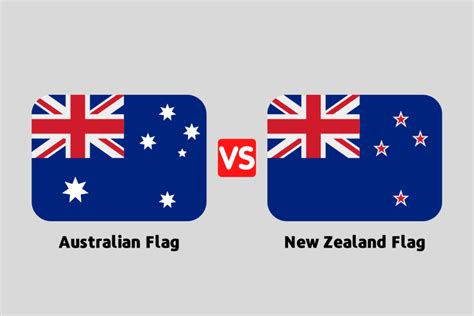Unveiling the Pacific: Flag Comparison

Welcome to a comprehensive exploration of the vibrant and diverse world of Pacific flags. This article delves into the captivating history, symbolism, and design elements that make each Pacific nation's flag unique. From the rich cultural heritage of Polynesia to the modern influences of Melanesia and Micronesia, we will uncover the stories and meanings behind these iconic symbols, offering an in-depth analysis for enthusiasts and those curious about the Pacific's visual identity.
A Spectrum of Colors and Symbolism: Pacific Flags in Focus

The Pacific region boasts an array of visually stunning and culturally significant flags, each representing a unique nation and its history. This section will delve into the specific design elements, colors, and symbols that make Pacific flags so distinctive.
The Rich Tapestry of Polynesian Flags
Polynesian flags often reflect the region's deep connection to the sea and its natural surroundings. For instance, the flag of Tonga features a vibrant red field, symbolizing the nation's bravery and strength, with a striking white cross representing Christianity and the four main island groups of the kingdom. Similarly, the Samoan flag showcases a bold red backdrop adorned with a blue canton, a symbol of its maritime history, and the Southern Cross constellation, a guide for sailors and a reminder of the country's location in the Southern Hemisphere.
| Country | Flag Colors | Symbolism |
|---|---|---|
| Tonga | Red, White | Bravery, Christianity, Island Groups |
| Samoa | Red, Blue, White | Maritime History, Southern Hemisphere |
| Cook Islands | Blue, White, Red, Green | Sky, Ocean, Cross, Land |

In contrast, the Cook Islands flag employs a combination of blue, white, red, and green. The blue and white represent the sky and ocean, while the red cross symbolizes Christianity and the green, the lush land of the islands.
Melanesian and Micronesian Flags: A Blend of Tradition and Modernity
Moving towards the west, Melanesian and Micronesian flags often showcase a blend of traditional cultural motifs and more contemporary design elements. The flag of Papua New Guinea, for example, features a striking bird of paradise, a symbol of the nation's unique wildlife, against a vibrant black and red background, representing the country's fertile soil and its people's resilience.
In Micronesia, the Marshall Islands flag stands out with its bold blue and orange colors. The orange and white stripes represent the 24 Marshallese districts, while the blue field symbolizes the Pacific Ocean, a vital part of the islanders' culture and economy.
| Country | Flag Colors | Symbolism |
|---|---|---|
| Papua New Guinea | Black, Red | Soil, Resilience, Wildlife |
| Marshall Islands | Blue, Orange | Ocean, Districts, Culture |
| Fiji | Blue, White, Red | Fiji's Unity, British Heritage, South Cross |
Fiji's flag, with its blue, white, and red colors, showcases the country's unity, with the Union Jack in the canton representing its British heritage, and the Southern Cross, a reminder of its location in the Southern Pacific.
Historical Evolution: Pacific Flags Over Time

The evolution of Pacific flags is a fascinating journey, often intertwined with the region's complex colonial past and subsequent journey towards independence. Many Pacific nations have adopted new flag designs to symbolize their newfound freedom and identity.
From Colonial Rule to Independence
During the colonial era, many Pacific nations flew flags representing their colonial powers, such as the British Union Jack or the French Tricolor. However, as these nations gained independence, they embraced the opportunity to create unique, locally inspired flags.
Take, for instance, the flag of Kiribati, which was adopted in 1979 upon the nation's independence from British rule. The flag's design, with its bold gold sun, symbolizes life, while the 17 rays represent the 16 Gilbert Islands and the Banaba Island, and the three vessels are a reminder of the nation's maritime history.
Modern Influences and Adaptations
In some cases, Pacific nations have adapted their flags to reflect modern values or to better represent their diverse populations. The flag of New Zealand, for example, underwent a redesign in 2016, incorporating the silver fern, a symbol widely associated with the country, to create a more distinctive and contemporary flag.
| Country | Flag Evolution |
|---|---|
| Kiribati | Adopted in 1979 post-independence, featuring a sun and vessels for maritime history. |
| New Zealand | Redesigned in 2016 to incorporate the iconic silver fern, symbolizing a modern, distinctive identity. |
| Hawaii | The Hawaiian flag, with its distinctive eight-striped design, represents the islands' historical kingdoms and its unique cultural heritage. |
Similarly, the Hawaiian flag has a unique design with eight horizontal stripes, alternating red and white, representing the eight major islands and their historical kingdoms. The Union Jack in the canton reflects Hawaii's past as a British protectorate.
Pacific Flags: A Symbol of Cultural Pride and Unity
Pacific flags are more than just pieces of fabric; they are powerful symbols of cultural pride, identity, and unity. They are flown with pride during national celebrations, sporting events, and everyday life, serving as a constant reminder of a nation's history, values, and aspirations.
Flags in Daily Life and Celebrations
In the Pacific, flags are an integral part of daily life. They adorn public buildings, schools, and homes, often flying proudly alongside the flags of neighboring countries or the United Nations. During festivals and national holidays, such as Independence Day or Constitution Day, the flag takes center stage, with vibrant displays and performances honoring its significance.
For instance, during Tonga's Emancipation Day, a national holiday commemorating the abolition of serfdom, the Tongan flag is a central symbol, flying high alongside traditional dances and cultural performances that celebrate the nation's freedom and heritage.
Pacific Flags in the Global Arena
On the international stage, Pacific flags play a crucial role in representing their nations at global events, from the Olympic Games to the United Nations General Assembly. These flags are not only a means of identification but also a way for Pacific nations to showcase their unique cultures and contributions to the world.
At the Pacific Games, a multi-sport event held every four years, the flags of participating nations are proudly displayed, fostering a sense of unity and camaraderie among the Pacific Island nations.
Conclusion: The Ever-Unveiling Pacific
The Pacific region's flags are a testament to its rich history, diverse cultures, and unwavering spirit. Each flag, with its unique design and symbolism, tells a story of resilience, pride, and unity. As we continue to explore and appreciate the Pacific's vibrant heritage, these flags will remain a source of inspiration and a reminder of the region's ever-unveiling beauty and strength.
What are the key elements of a Pacific flag’s design?
+Pacific flags often feature bold colors, simple geometric shapes, and symbolic motifs that represent the nation’s history, culture, and geography. These elements come together to create visually striking and meaningful flags.
How do Pacific flags reflect the region’s colonial past?
+Many Pacific flags during the colonial era featured the symbols of their colonial powers, such as the Union Jack or the French Tricolor. However, post-independence, nations embraced locally inspired designs, reflecting their unique cultural identities.
What is the significance of the Southern Cross in Pacific flags?
+The Southern Cross constellation is a prominent feature in several Pacific flags, including those of Samoa, Fiji, and New Zealand. It serves as a navigational guide for sailors and symbolizes the Southern Hemisphere, reminding people of the region’s unique place in the world.


